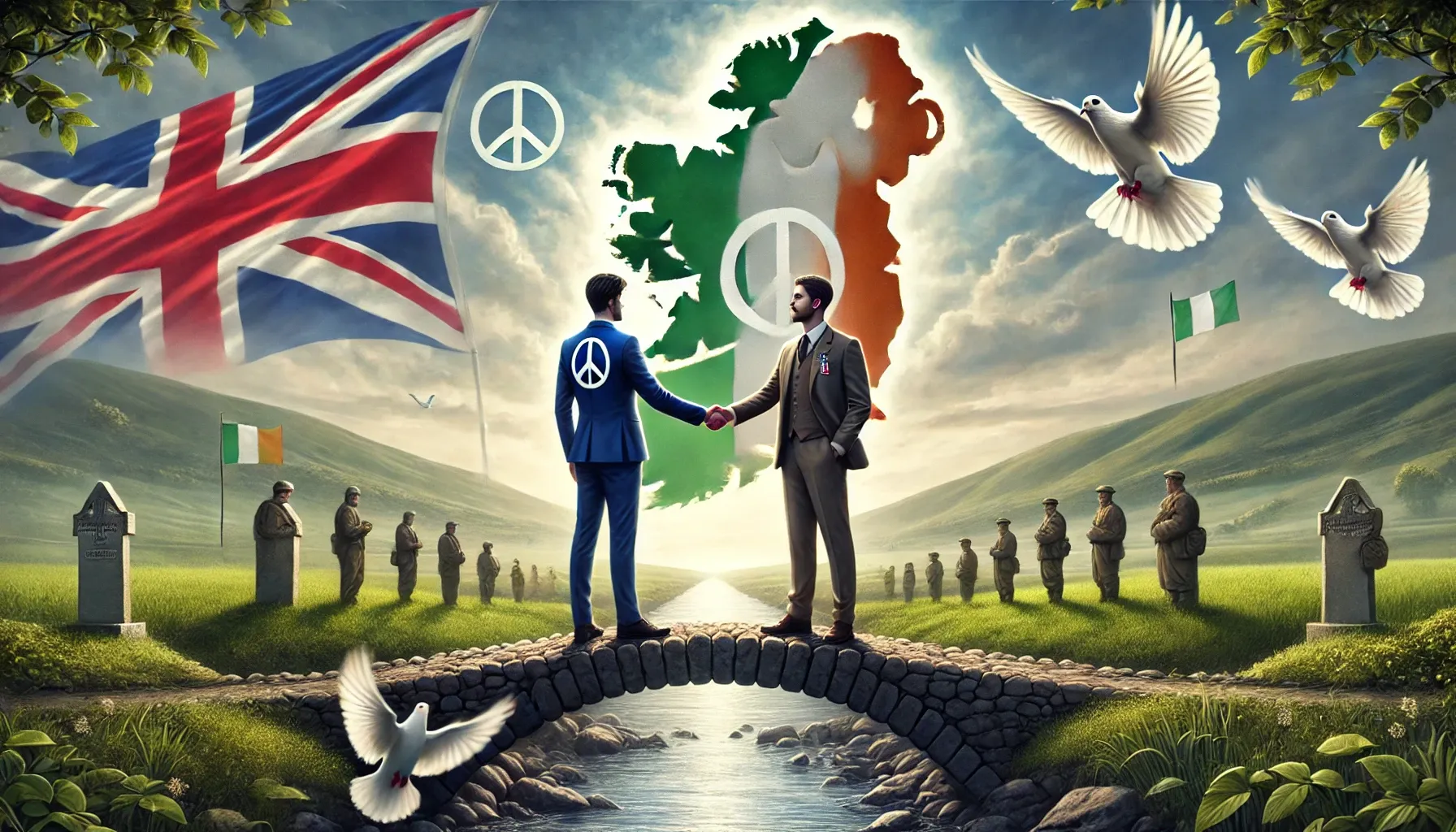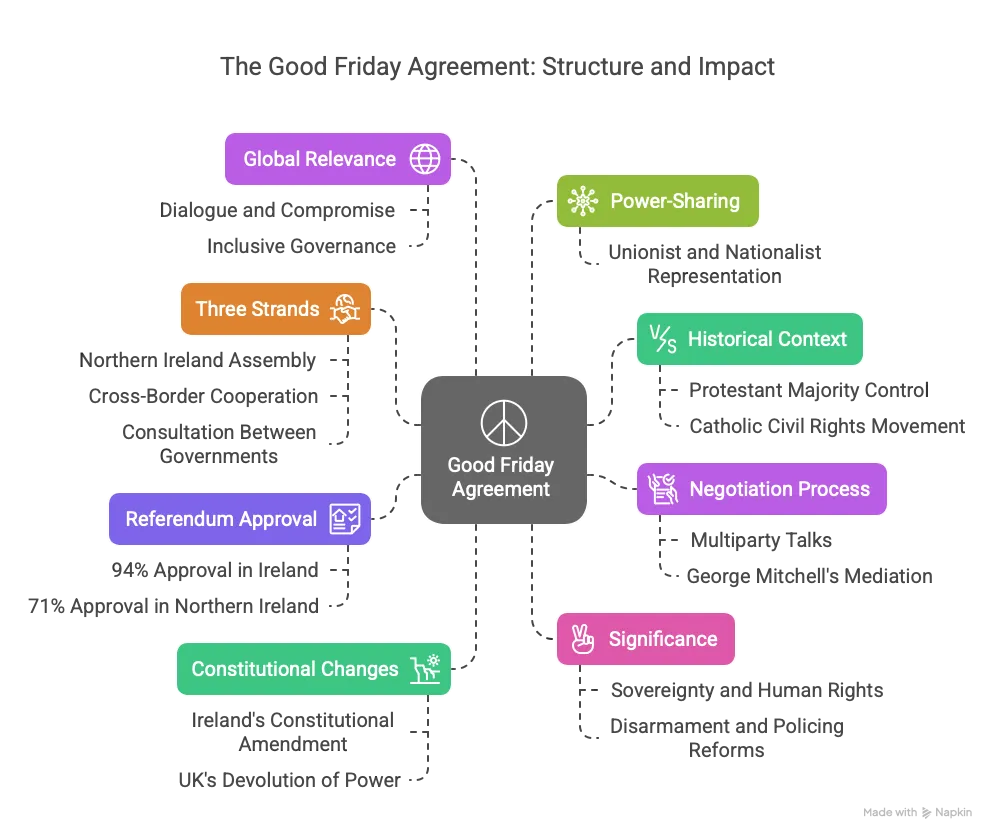On This Day Today
The Good Friday Agreement
Last Updated
10th April, 2025
Date Published
9th April, 2025
Share This Post With Someone


- Overview: The Good Friday Agreement, signed on April 10, 1998, in Belfast, is a landmark peace accord that ended decades of conflict in Northern Ireland, known as "The Troubles," involving Catholics, Protestants, and British forces.
- Historical Context: By the mid-1960s, Northern Ireland’s Protestant majority controlled state institutions, often discriminating against the Catholic minority, leading to a civil rights movement and subsequent violence from the late 1960s to the 1990s.
- The Troubles: This period saw bombings, assassinations, and riots, resulting in over 3,600 deaths, with British troops deployed to quell unrest, escalating tensions further.
- Negotiation Process: Multiparty talks began in June 1996, involving Ireland, Northern Ireland’s political parties, and the British government, culminating in the agreement mediated by former U.S. Senator George Mitchell.
- Three Strands: The agreement established (i) the Northern Ireland Assembly for local governance, (ii) cross-border cooperation between Ireland and Northern Ireland, and (iii) continued consultation between British and Irish governments.
- Referendum Approval: On May 22, 1998, the agreement was ratified in a historic joint referendum, with 94% approval in Ireland and 71% in Northern Ireland, marking the first all-Ireland vote since 1918.
- Constitutional Changes: Ireland amended its constitution to relinquish territorial claims over Northern Ireland, while the UK ended direct rule, devolving power to the Northern Ireland Assembly on December 2, 1999.
- Power-Sharing: The agreement introduced a devolved government with power-sharing between unionists (favoring UK ties) and nationalists (favoring Irish unity), ensuring representation of both communities.
- Significance: It addressed sovereignty, human rights, disarmament, and policing reforms, providing a framework for peace, stability, and reconciliation in a divided society.
- Global Relevance: The agreement serves as a model for conflict resolution, emphasizing dialogue, compromise, and inclusive governance, with lessons applicable to ethnic and territorial disputes worldwide.
Glossary
- The Troubles: A violent conflict in Northern Ireland (late 1960s–1998) between Catholic nationalists and Protestant unionists.
- Devolution: Transfer of powers from a central government to regional or local authorities.
- Unionists: Those favoring Northern Ireland’s continued union with the United Kingdom.
- Nationalists: Those advocating for unification with the Republic of Ireland.
- Northern Ireland Assembly: An elected body responsible for local governance under the agreement.